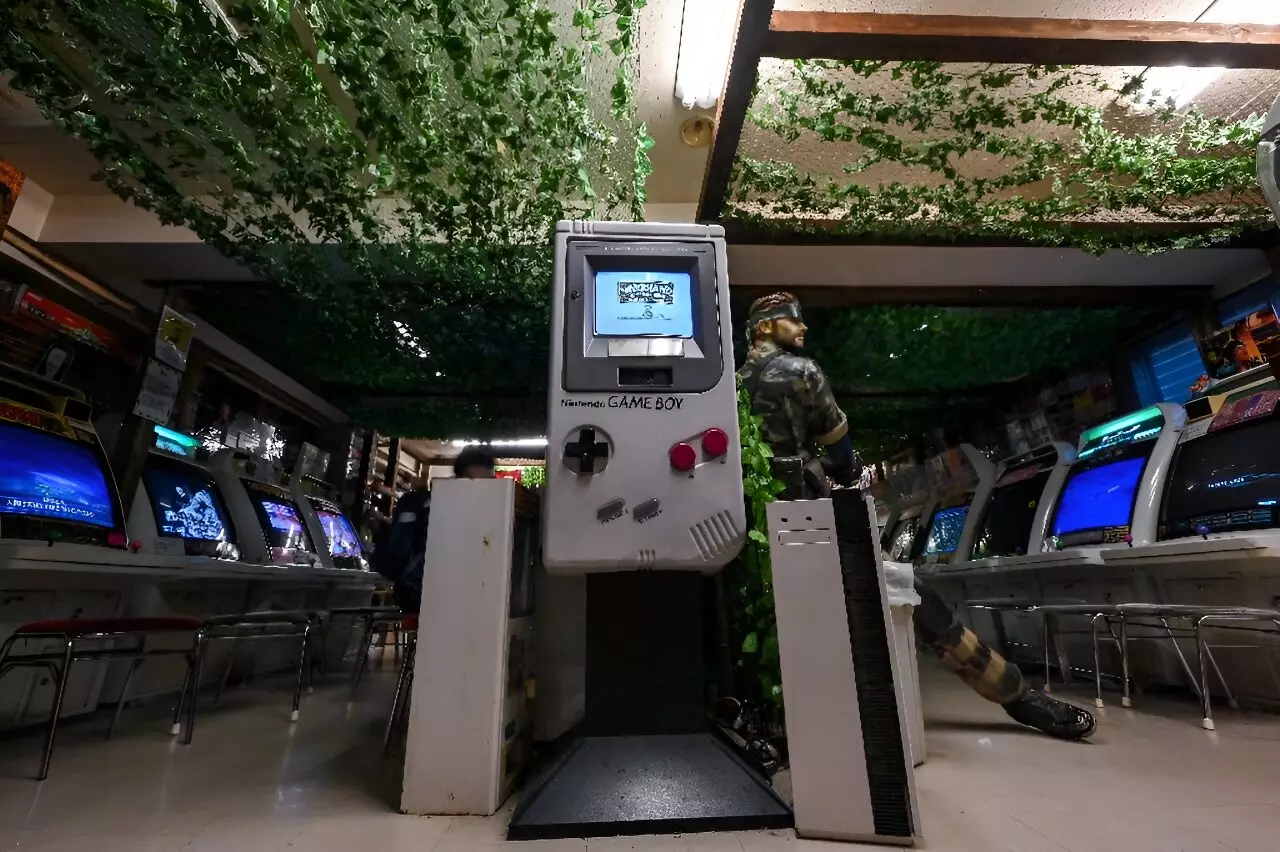In the heart of Tokyo’s bustling Akihabara district, the vibrant culture of retro gaming comes alive. With neon signs flickering and the hum of excitement echoing through the air, tourists and locals alike find themselves drawn to specialized stores like Super Potato, which have transformed into veritable emblems of nostalgia. Among the eager patrons is David Madrigal, a 23-year-old American tourist whose excitement is palpable as he navigates the aisles filled with vintage gaming paraphernalia. “The moment I walked into this store, I felt like a kid walking into a candy shop,” Madrigal exclaims. His enthusiasm stems not only from childhood memories but from the allure of collecting—an ever-growing trend that bridges generational gaps and geographical boundaries.
Madrigal’s purchase of a PS Vita from 2011 for a mere $200 stands in stark contrast to the exorbitant prices he typically encounters back home, where such a console might fetch upwards of $600. This price disparity draws a significant contingent of foreign tourists, particularly those from the United States, seeking unique finds that can’t be replicated in their home markets. Within the cluttered confines of Super Potato, which boasts three floors of vintage games and consoles, the journey through gaming history is both affordable and intoxicating.
Despite the relative accessibility of many vintage items, some prices at Super Potato are staggering. For instance, a portable Nintendo Game & Watch from the 1980s—featuring none other than “Zelda”—is boldly marked at a staggering 250,800 yen, roughly $1,750. Such high prices underscore the complex nature of retro gaming collecting, which is influenced by various economic factors. Super Potato’s store manager, who goes by Komura, notes that approximately 70-80 percent of their clientele comprises international tourists. This influx not only drives demand but has made Akihabara a hotspot for those eager to delve into the past.
One of the vital components fuelling this retro craze is the nostalgia factor. For many, contemporary games can feel repetitive and formulaic, lacking the innovative magic that characterized earlier era titles. Madrigal articulates this sentiment by suggesting that past games held a novelty and creativity that today’s developers may hesitate to explore. Video game historian Hiroyuki Maeda echoes this sentiment, arguing that collectors’ interest often arises from the unique marketing strategies employed in different regions, which led to varying designs and titles for consoles like Nintendo’s Famicom.
The Collector’s Psychology
Nostalgia plays a significantly psychological role in the appeal of retro gaming. For individuals like “Proudro,” whose collection spans thousands of games housed in a repurposed building near his family home, the allure lies not in the gameplay itself but in the memories that the items evoke. At 50 years old, Proudro reflects on the joy of childhood spent in gaming shops and friends’ living rooms, suggesting that the act of collecting provides solace—a way to relive those treasured moments.
Interestingly, Proudro candidly admits he’s not much of a player anymore; rather, being surrounded by his collection brings him happiness. His journey to amass such a collection was once straightforward, involving visits to overlooked stores where dust-covered treasures were practically given away. The transformation of the market since the late 1990s has changed the landscape drastically; what were once discarded video games are now prized possessions, with certain items fetching astronomical sums. A still-sealed copy of “Super Mario Bros.” sold for $2 million in 2021, exemplifying the collector’s market’s unpredictable nature.
Proudro has taken it upon himself to share his passion through an association for retro gaming enthusiasts, connecting with collectors worldwide. However, he expresses concern over the increasing commodification of Japanese products and the potential loss of cultural heritage. Proudro’s sentiments resonate deeply; he believes that certain items should remain in Japan, as they are part of the nation’s rich cultural tapestry. This thought extends to comparisons with historical artifacts, like Japanese woodblock prints, which were ultimately exported and later repatriated after gaining appreciation abroad.
Ultimately, the explosion in retro gaming demand highlights a larger cultural narrative surrounding nostalgia, innovation, and the preservation of history. Amid the gaming renaissance, it remains crucial for Japan to recognize and value its unique position in the gaming industry—before its treasures become more sought after abroad than at home. As retro gaming continues to flourish on global scales, the enthusiasts who cherish these relics remind us that some things are not merely collectibles; they are symbols of our pasts, deserving of reverence and preservation.


Leave a Reply